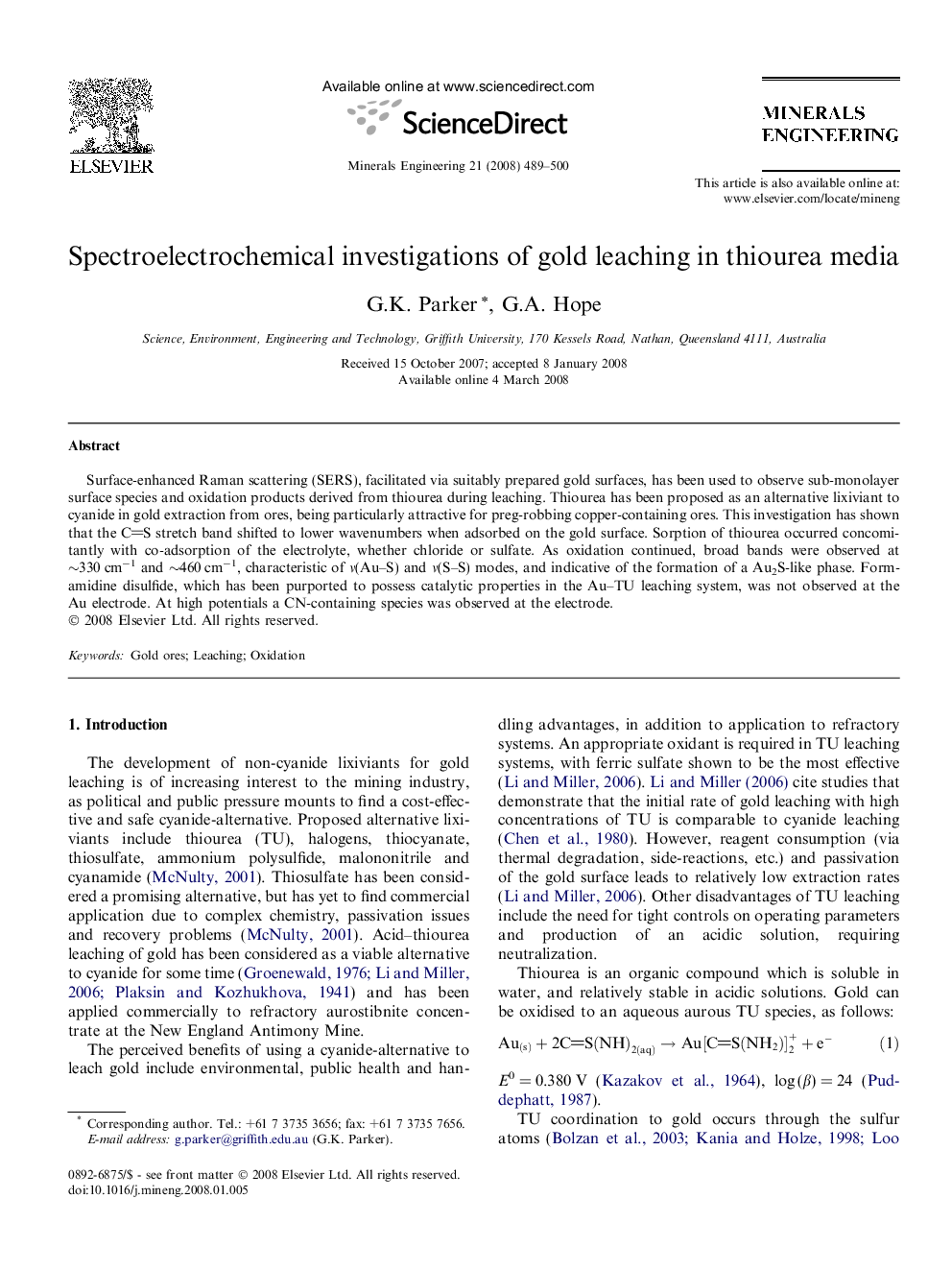| Article ID | Journal | Published Year | Pages | File Type |
|---|---|---|---|---|
| 234321 | Minerals Engineering | 2008 | 12 Pages |
Surface-enhanced Raman scattering (SERS), facilitated via suitably prepared gold surfaces, has been used to observe sub-monolayer surface species and oxidation products derived from thiourea during leaching. Thiourea has been proposed as an alternative lixiviant to cyanide in gold extraction from ores, being particularly attractive for preg-robbing copper-containing ores. This investigation has shown that the CS stretch band shifted to lower wavenumbers when adsorbed on the gold surface. Sorption of thiourea occurred concomitantly with co-adsorption of the electrolyte, whether chloride or sulfate. As oxidation continued, broad bands were observed at ∼330 cm−1 and ∼460 cm−1, characteristic of ν(Au–S) and ν(S–S) modes, and indicative of the formation of a Au2S-like phase. Formamidine disulfide, which has been purported to possess catalytic properties in the Au–TU leaching system, was not observed at the Au electrode. At high potentials a CN-containing species was observed at the electrode.
